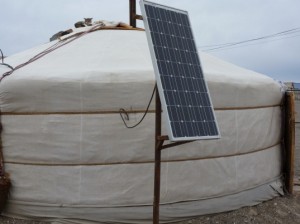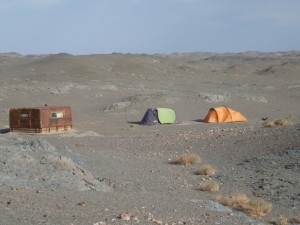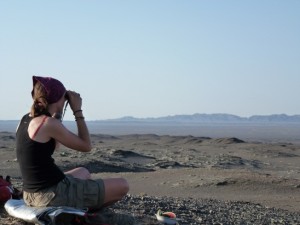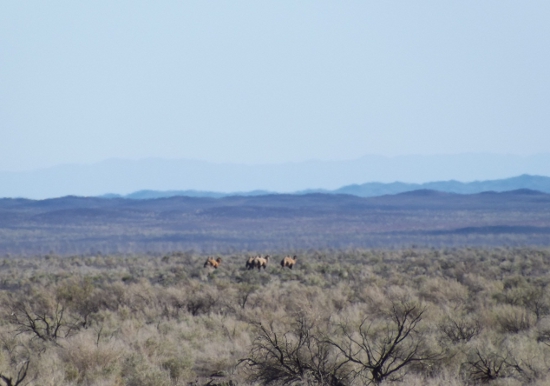Drinking fermented horses milk, racing alongside camels and being deserted in the world’s fifth largest desert. It might not sound like everyone’s cup of tea but it was one of the most incredible 3 weeks of my life…..
My name is Laura Laird and for the last 5 years I have been working for ZSL managing the presenting and volunteering teams at Whipsnade Zoo. This year I was lucky enough to be awarded the Michael Brambell Travel Award which took me to my chosen country of Mongolia to see first-hand ZSL’s conservation work in action.

Arriving in Ulaanbaatar (Mongolia’s capital city) I met up with the ZSL Steppe Forward team. As well as learning about the once extinct in the wild Przewalski horse, I also had the privilege of being able to assist in a population study of mammals in the Gobi desert, in particular focusing on the critically endangered EDGE species, the Bactrian camel.
It was to be an 11 day trip taking us from the Capital city to the Great Gobi A strictly protected area, a journey of over 1000km. The first 2 days were spent in the back of a Russian van driving along mainly non-existent roads. Already I was amazed at the sheer amount of wildlife we had encountered; golden eagles, steppe eagles, buzzards, vultures, jerboas and voles and I was excited about what else we might see. Occasionally we stopped at Gers (traditional Mongolian tents) to refuel and families would offer us salt tea and food, usually camel meat or cheese curd to keeping us going.
Eventually we reached the small village of Bayantooroi where the Great Gobi reserve headquarters are located. I was very surprised to find that a village in the middle of nowhere would have street lights and phone signal! There were solar panels everywhere, making the most of the country’s 260 days of sunshine a year.
At the headquarters themselves we spent a couple of days training and preparing for the survey and survival in the desert. We were introduced to the rangers who help protect the reserve by preventing the hunting of animals and the stealing of resources such as firewood as well as driving out captive populations of camels in an attempt to prevent them from breeding with the wild ones and diluting the population. It soon became clear how vital the role of the ranger was. Only days before we arrived they had seized an illegally poached white tailed gazelle that had been taken from the reserve. Unfortunately there is only enough government funding to pay for 14 rangers meaning that they really have their work cut out trying to protect an area over 4 million hectares in size.

A number of the rangers had agreed to take part in the survey bringing our numbers up to 30. The plan was for our group to be split in to two to cover two separate areas of the protected area. These two groups then split into smaller convoys which continued to break off two at a time as pairs reached their observation point. We were given a number of data sheets on which we were to record any animal tracks or signs that we spotted and any sighting of wild camel (Camelus bactrianus ferus), wild ass (Equus hemionus hemionus) and goitered gazelle (Gazella subgutturosa).
Our observation point was located at Choi water, a large watering hole towards the south of the protected area. I was going to be dropped off with one member of the Steppe Forward team, a couple of tents and a box of food. I have to admit it was both an exciting and slightly daunting prospect to be one of only 2 people for at least 30km and the nearest village being about 150km away. Luckily there was plenty of entertainment to distract me from my thoughts with Camels and Gazelle racing alongside us as well as a couple of stops to repair our vehicle.
After seeing plenty of wildlife on route I was expecting our observation point right next to a watering hole to be a hive of activity. As I watched our vehicle drive away and leave us I realised I couldn’t have been more wrong. Every last drop of water was gone and all that was left was one unlucky wild ass, who just like us had arrived too late. We set up camp on the top of a hill giving us an amazing vantage point across the desert. It wasn’t the most comfortable of stops however as the sand was covered in a fine layer of shale and shingle and although it was warm during the day (high 20’s) the temperature could drop below zero degrees at night.

On the first morning we set up numerous cameras and small mammals traps, recorded tracks and carried out 6 hours of observations a day. In four days the only sign of life were the flies that plagued us constantly, a crow, a buzzard, two lizards and the vole that we caught in our trap. It really hit home just how vast and extreme the Gobi could be.
Luckily other observation points had been more successful and had recorded sightings. Adiya our EDGE fellow is still putting the data together but estimates there to be only 500 camels living in an area of 4.4 million hectares. From this he aims to draw up a conservation action plan to help protect the Bactrian camel for the future.
Having been a part of this vital work I feel incredibly honoured and have learned so much. Since returning back to the UK I have been involved in the development of Whipsnades Passage through Asia exhibit and we have some exciting new interpretation planned to reflect my time spent in Mongolia. Watch this space!
